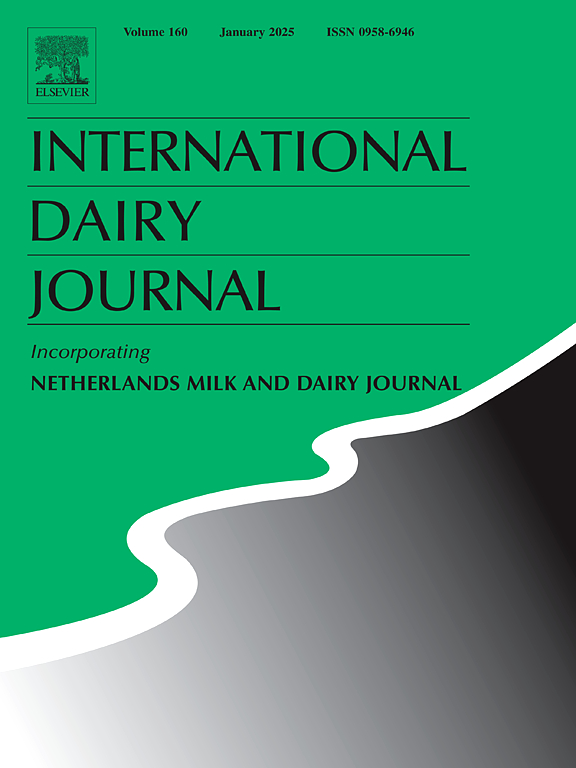Simulated gastrointestinal protein digestion of sheep and goat milk infant formulae
IF 3.1
3区 农林科学
Q2 FOOD SCIENCE & TECHNOLOGY
引用次数: 0
Abstract
While cow and goat milks are used in manufacturing infant formulae (IFs), sheep milk is not allowed in European Union. To assess its suitability, we studied, by a peptidomics approach, the in vitro gastro-intestinal protein digestion of commercial sheep and goat IFs. In both IFs, after 120 min in the stomach, caseins were found massively degraded, while residual whey proteins were detected. In the intestine, β-lactoglobulin, and α-lactalbumin were found resistant to enzymes, particularly in sheep IFs. Compared to goat IF, sheep IF caseins showed a higher degradability, with higher number of released peptides and % protein coverage, particularly for κ- and αs1-casein. On the contrary, whey proteins were found more hydrolysed in goat IF. In the intestine, for both IFs, the peptide profiles resembled those of the stomach, except for α-lactalbumin. Several bioactive peptides were identified, among these casein phosphopeptides. Overall, protein digestion parameters of sheep IF are comparable with goat IF.
模拟绵羊和山羊奶婴儿配方奶粉的胃肠道蛋白质消化
虽然牛奶和羊奶被用于生产婴儿配方奶粉,但羊奶在欧盟是不允许的。为了评估其适用性,我们采用肽组学方法研究了商品绵羊和山羊IFs的体外胃肠道蛋白质消化。在两种干扰素中,在胃中放置120分钟后,发现酪蛋白大量降解,同时检测到残留的乳清蛋白。在肠道中,发现β-乳球蛋白和α-乳白蛋白对酶具有抗性,特别是在绵羊IFs中。与山羊酪蛋白相比,绵羊酪蛋白具有更高的可降解性,具有更高的肽释放数量和%蛋白覆盖率,特别是κ-和αs1酪蛋白。相反,山羊IF中乳清蛋白的水解率更高。在肠道中,除了α-乳清蛋白外,两种干扰素的肽谱与胃相似。在这些酪蛋白磷酸肽中鉴定了几种生物活性肽。总体而言,绵羊和山羊的蛋白质消化参数相当。
本文章由计算机程序翻译,如有差异,请以英文原文为准。
求助全文
约1分钟内获得全文
求助全文
来源期刊

International Dairy Journal
工程技术-食品科技
CiteScore
6.50
自引率
9.70%
发文量
200
审稿时长
49 days
期刊介绍:
The International Dairy Journal publishes significant advancements in dairy science and technology in the form of research articles and critical reviews that are of relevance to the broader international dairy community. Within this scope, research on the science and technology of milk and dairy products and the nutritional and health aspects of dairy foods are included; the journal pays particular attention to applied research and its interface with the dairy industry.
The journal''s coverage includes the following, where directly applicable to dairy science and technology:
• Chemistry and physico-chemical properties of milk constituents
• Microbiology, food safety, enzymology, biotechnology
• Processing and engineering
• Emulsion science, food structure, and texture
• Raw material quality and effect on relevant products
• Flavour and off-flavour development
• Technological functionality and applications of dairy ingredients
• Sensory and consumer sciences
• Nutrition and substantiation of human health implications of milk components or dairy products
International Dairy Journal does not publish papers related to milk production, animal health and other aspects of on-farm milk production unless there is a clear relationship to dairy technology, human health or final product quality.
 求助内容:
求助内容: 应助结果提醒方式:
应助结果提醒方式:


